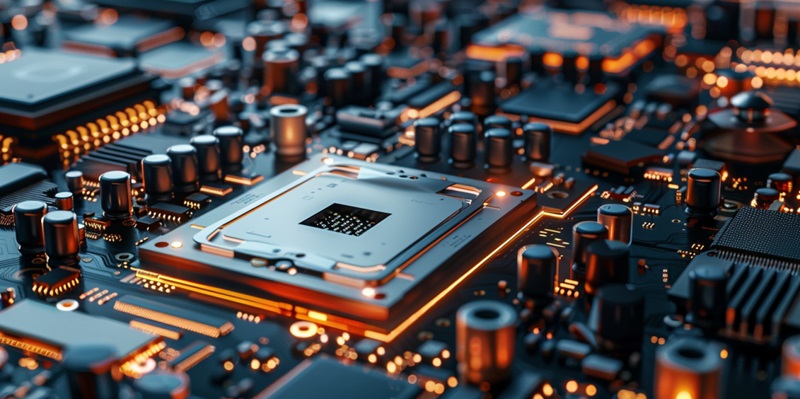The emergence of AMD’s MI300X AI accelerator has heralded a new era for high-performance GPUs, marking a significant milestone achieved by AMD in its ongoing quest to compete with Nvidia in the fiercely competitive data center GPU market. Initially teased over a year ago, AMD officially launched the MI300X in late 2023, delivering a remarkable performance that has captured the attention of the tech world. This article delves into the impressive benchmark results of the MI300X, offers a comparison with Nvidia’s offerings, and highlights the broader implications for the GPU market, where AMD’s presence is becoming ever more pronounced.
Benchmark Performance and Market Position
Surpassing Nvidia’s RTX 4090
AMD’s MI300X made an eye-catching debut by topping the Geekbench OpenCL benchmark charts with a score of 379,660, an achievement that underscores the accelerator’s superior capabilities. In contrast, Nvidia’s popular consumer GPU, the RTX 4090, typically scores around 320,000 on the same benchmark—a difference that’s impossible to ignore. While comparing the MI300X with the RTX 4090 isn’t entirely equitable due to their different target markets, the benchmarks provide an interesting snapshot of AMD’s advancements. The MI300X is designed for data center applications and comes packed with 192GB of high-bandwidth memory, a stark contrast to the 24GB of GDDR6X found in the much more consumer-friendly RTX 4090, which is priced at around $1,599 as opposed to the MI300X’s estimated $15,000.
However, it’s crucial to recognize that the MI300X has a far higher thermal design power (TDP) at 750W, making it a heavyweight contender in the data center arena. The RTX 4090, with its more modest TDP, is optimized for different use cases, including gaming and professional content creation. Despite these differences, the MI300X’s benchmark scores position it as a formidable player in a field traditionally dominated by Nvidia. This breakthrough is even more significant when considering the technology and power consumption metrics, indicating that AMD is bridging the gap and setting new standards in high-performance computing.
Competitiveness in the Data Center Market
The MI300X isn’t just a high-performer; it signifies AMD’s escalating rivalry with Nvidia, particularly with Nvidia’s established data center GPUs like the H100 and A100. That a data center GPU like the MI300X appears on a benchmark chart generally populated by consumer GPUs is noteworthy. Nvidia has long reigned supreme in this area, making the MI300X’s entry all the more impactful. Even Nvidia’s data center GPU, the L40S from the Ada Lovelace generation, which scored 352,507, trails behind the MI300X, underscoring the technological advancements AMD has made.
This competitive performance is more than a benchmark victory; it exemplifies AMD’s growing influence in the data center GPU sector. With enterprises increasingly demanding higher computational power for AI and machine learning applications, the MI300X’s impact is considerable. The card’s memory and computational capabilities make it an ideal candidate for these burgeoning fields. Furthermore, the technological strides made by AMD with the MI300X suggest a broader trend where AMD is no longer just playing catch-up but is actively setting new performance markers and pushing innovation.
Future Prospects and Industry Implications
Evolution and Upgrades on the Horizon
Looking forward, AMD is already gearing up to build on the success of the MI300X with the upcoming MI325X, set to feature faster HBM3e memory and debut in the fourth quarter of 2024. This impending upgrade signals AMD’s intent to not only maintain but also amplify its competitive edge. With the MI325X poised to challenge Nvidia’s anticipated Blackwell GPUs, the high-performance GPU market is set for an intriguing showdown. The introduction of the MI325X aligns with AMD’s strategy of continuous evolution, aiming to deliver not just incremental improvements but substantial leaps in performance and efficiency.
This relentless pursuit of innovation is a clear indicator that AMD is investing heavily in research and development to remain at the forefront of technology. The quicker, more efficient HBM3e memory promises to elevate the performance standards even further, enabling the MI325X to handle more complex data sets and computational tasks with greater ease. This sort of progression is crucial for maintaining relevance and leadership in a rapidly evolving landscape where technological advancements can swiftly redefine market dynamics.
Implications for the High-Performance GPU Market
The arrival of AMD’s MI300X AI accelerator has signaled a new chapter in the realm of high-performance GPUs, representing a crucial achievement for AMD in its relentless efforts to rival Nvidia in the highly competitive data center GPU market. Initially hinted at over a year ago, AMD officially launched the MI300X in late 2023. This introduction showcased an impressive performance that has garnered significant attention across the tech industry. This article explores the remarkable benchmark results of the MI300X, compares its performance to Nvidia’s offerings, and examines the larger implications for the GPU market. AMD’s growing influence in this sector is increasingly evident. Analysts predict that the MI300X could be a game-changer, offering a viable alternative to Nvidia’s long-standing dominance. The enhanced AI capabilities and processing power of the MI300X make it a formidable contender, promising to reshape the competitive landscape and potentially drive innovation and development within the GPU industry.

